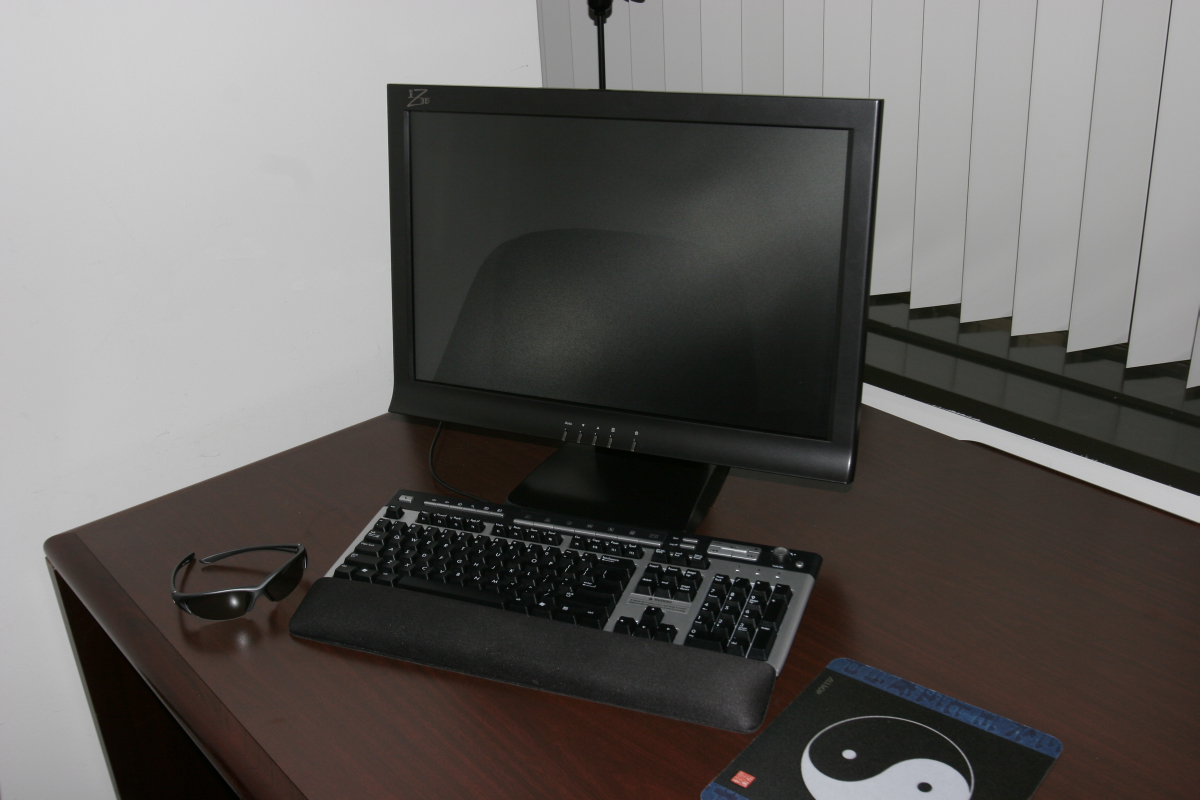CES '09: The Real Stereoscopic Story
After testing Nvidia’s GeForce 3D Vision for most of last week, I came away impressed with how the company picked up where the technology left off 10 years ago. Now that CRTs have been relegated to the scrap heap, it hasn’t been possible to get the 120 Hz needed for an active stereoscopic solution until now. With Samsung and Viewsonic shipping the requisite LCD technology, 60 Hz in each eye is once again feasible given 120 Hz panels. A 40 hour battery charge and decent-looking shades helped matters as well.
But through it all, I was bothered by the fact that Nvidia has competition I wasn’t able to test or compare. It’s imprudent to recommend one solution when there’s another out there that very well could be better. Tonight, at the ShowStoppers gathering in the Wynn, I had an opportunity to put the competition to the test, though it wasn’t in as exhaustive a battery of benchmarks. But the experience was enough to get my questions answered by the company behind the competing tech—iZ3D.
In case you aren’t familiar with the company, iZ3D sells 3D displays consisting of two panels, which actually generate the 3D image. Driving those panels, unfortunately, means connecting both DVI outputs on your graphics card to a single monitor. It can then be seen as intended by donning a pair of passive polarized shades that cost significantly less than what Nvidia is offering. The potential for iZ3D to outmaneuver Nvidia on that point alone is massive. And AMD recently came out claiming that it’d be partnering with iZ3D to enable Radeon with special support for the company’s display output technology.
Given similar panel pricing and much more economical glasses—especially in environments where multiple people might want to watch the screen—the advantage seemed to sway in AMD’s direction.
The first question I asked iZ3D was, “Nvidia just unveiled its GeForce 3D Vision active shutter glasses, which sell for $199. AMD has come out saying that it’d be able to offer a superior solution by integrating your (iZ3D’s) software into its CatalystControlCenter driver package. How will Radeon graphics cards benefit from that?” The answer, it turns out, was that, while AMD would like to be able to build iZ3D’s software into its drivers, that simply won’t be happening any time soon. Software is an important part of iZ3D’s solution and it isn’t quite ready to give that away quite yet. Simply, someone at AMD made a claim they shouldn’t have made.
The follow-up begging to be asked was, “so, if AMD won’t have iZ3D software in its drivers, how will Radeon graphics cards benefit from iZ3D’s efforts any more than, say, an Nvidia graphics card?” In short, they won’t. With any graphics card installed, you can buy an iZ3D display, install the company’s drivers, use its polarized glasses, and enjoy the same visuals. Any benefit to AMD is a result of performance you’d see even without the glasses. Crysis, for instance, runs better on the Radeon—but because of AMD’s efforts at optimizing its own driver, not because of any partnership between AMD and iZ3D. Bottom line: the battle for stereoscopic dominance, if you can call it that, is not between AMD and Nvidia. Rather, it’s Nvidia versus iZ3D—AMD really has no bearing in the situation whatsoever, it’d seem. It just so happens that iZ3D and AMD are both up against Nvidia in different fields, making them likely bedfellows.
With that established, I set out to compare the company’s 22 inch 3D display against what I had just been working with the week prior—and the solution is just not there yet. On Nvidia’s GeForce 3D Vision, you adjust depth on a per-game basis, at most. Most of the time, on the titles you actually want to play in 3D, you don’t have to touch anything. But on the iZ3Ds display, we had to tweak separation (depth, just like Nvidia’s 3D Vision) and convergence. And depending on what we were looking at, those settings needed to be constantly tweaked. The latest technology built into the display, called Auto Focus, attempts to correct for differences in separation and convergence. But both myself and Tom’s Guide managing editor Rachel Rosmarin saw double of everything with the feature turned on. It’s still not final yet, so hopefully the company sees more favorable luck as Auto Focus matures.
Get Tom's Hardware's best news and in-depth reviews, straight to your inbox.
Of course, as the iZ3D rep told us, because everyone’s eyes are different, everyone sees 3D in a different way. Nevertheless, we’d have to conclude that after spending hours upon hours with GeForce 3D Vision and several minutes with iZ3D’s demo of choice at CES 2009, we’d have to stick with the well-integrated Nvidia package until iZ3D is able to iron out some of the rough edges still apparent in its existing design.
That is, of course, if you’re willing to spend $199 on glasses, $399 on a 22 inch LCD, and up to $500 for a graphics card capable of serving up respectable performance on the setup.

